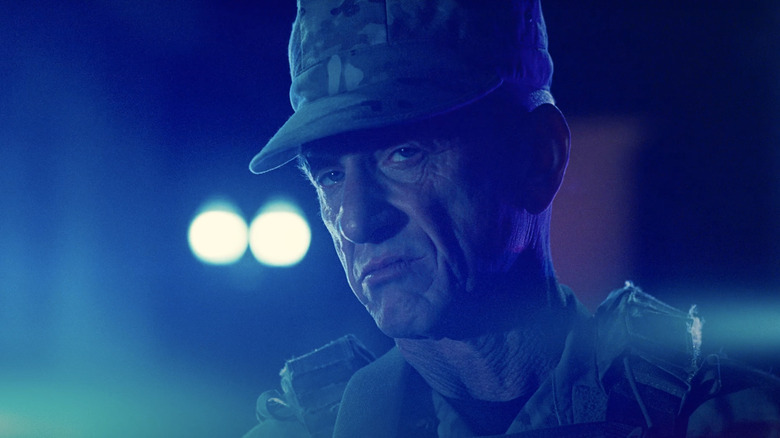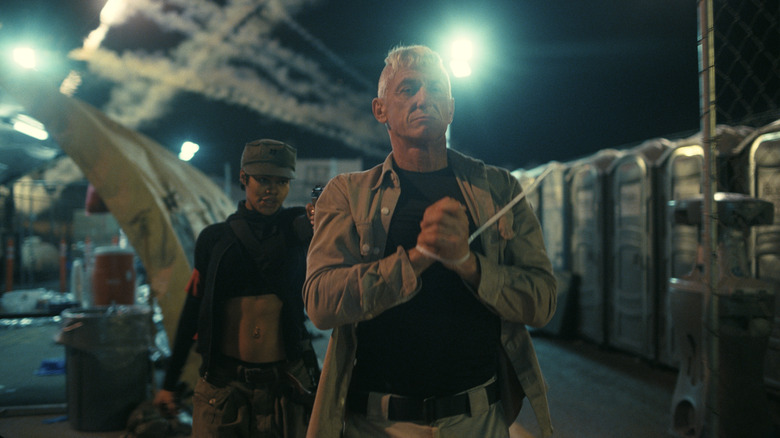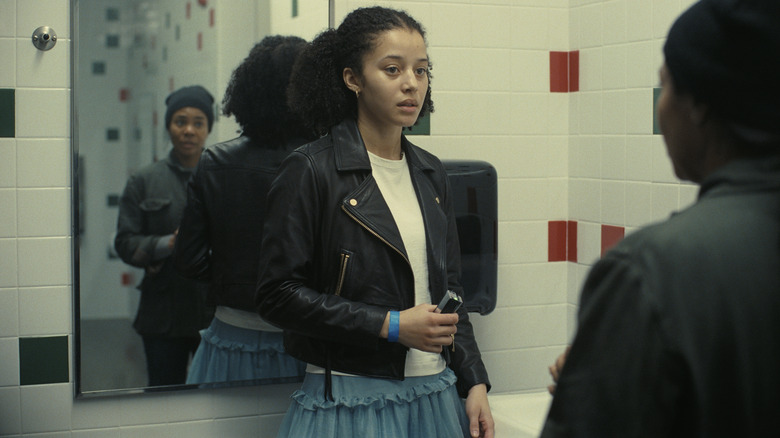One Battle After Another Features The Best Movie Villain Of 2025 (And It's Not Even Close)
Viva la revolución! This article contains major spoilers for "One Battle After Another."
Maybe there's just something in the air these days, but 2025 has been an incredible year for movie villains. Some have taken the supernatural route, led by Jack O'Connell's vampire Remmick and his merry band of Irish jig-dancing followers in Ryan Coogler's "Sinners," the clown-like witch Gladys (Amy Madigan) in "Weapons," who saw fit to terrorize an entire community of children, and the demonic entities of "The Conjuring: Last Rites." On the comic book side of things, Nicholas Hoult's Lex Luthor and Ralph Ineson's Galactus dominated the big screen (although we'd humbly suggest that Lewis Pullman's Sentry/the Void in "Thunderbolts*" had them all beat). Elsewhere, multiplexes were overrun by serial killers ("Dangerous Animals"), zombies ("28 Years Later"), and even artificial intelligence run amok ("Mission: Impossible – The Final Reckoning").
Whether a product of real life seeping into fiction or simply a quirk of timing, the last few months alone have given us a steady string of all-timer antagonists ... but "One Battle After Another" may have just delivered the best one yet. The catch, of course, is that he's by far the most chillingly "normal" one of them all. Paul Thomas Anderson's latest masterpiece follows a former revolutionary firebrand who's forced to flee into hiding and take the name Bob Ferguson (Leonardo DiCaprio). But when a ghostly figure from the past reappears years later in the form of Sean Penn's battle-hardened (and virulently racist) Colonel Steven J. Lockjaw, a man dead-set on wiping away the "sins" of his younger years, the movie shifts gears entirely into a cat-and-mouse chase for the ages.
On the surface, the dead-eyed Lockjaw is just ... a guy. Underneath, however, the disturbing psychology and hypocritical motivations driving his every action transform him into a relentless force of nature. From his simpering need to join a white supremacist front (absurdly calling themselves the "Christmas Adventurers Club") to his dehumanizing lust for Teyana Taylor's reckless freedom fighter Perfidia Beverly Hills to his one-man mission to hunt down and kill his potential daughter Willa (Chase Infiniti), Anderson and Penn have crafted one of cinema's most horrifying, repelling, and downright real bad guys in recent memory.
Sean Penn's performance in One Battle After Another is terrifyingly believable
One doesn't necessarily have to hand it to Sean Penn, to paraphrase one well-known meme, but perhaps we can make an exception for "One Battle After Another." Writer/director Paul Thomas Anderson hasn't risen to such a high level of acclaim without reason, and his uncanny eye for casting plays a large role in his success. His latest film earned headlines as his first collaboration with star Leonardo DiCaprio, while Chase Infiniti is all but guaranteed to drum up awards buzz following her breakout, scene-stealing performance here. Yet it's Penn's turn as Lockjaw that provides the fuel to this incredibly well-paced machine. There's no denying that the talented (though controversial) actor has had his fair share of meaty roles over the decades. Few, however, can compare to what he pulls off here as the terrifying Lockjaw.
Penn has always had a talent for gruff, no-nonsense archetypes, but that hardly even scratches the surface of how many layers he imbues Lockjaw without throughout the story. His introductory scene alone is a memorable and succinct summation of everything he stands for, as Perfidia blazes a violent trail through an immigrant detention center and comes face to face with the man in charge. A bizarre, psychological chess match ensues in which both the revolutionary and the military man attempt to exert power over the other, kicking off a sexually-charged standoff that could've sank the character before he even had a chance to make any further impact. But with Anderson carefully modulating the tone of this scene and Penn understanding exactly how far to push the envelope, this opening battle of wits builds a strong foundation that the rest of the script takes full advantage of moving forward.
From that point on, Lockjaw's every subsequent appearance practically drips with menace and believability. We totally buy his psychosexual obsession with Perfidia in the past — a genuine fetish found in many a bigot — just as much as we understand the racial animus and profound insecurity that drives him in the present. It could've been deceptively easy for Penn to turn this villain into a total caricature. Fortunately, he stops just short of that line and instead finds the twisted sense of humanity at the heart of a character who, in actuality, is simply desperate for approval from the worst people around.
One Battle After Another's villain makes this story inescapably political
This might sound odd for a movie (loosely) based on the novel "Vineland" by writer Thomas Pynchon, but some moviegoers may come away wondering why Paul Thomas Anderson decided to focus on an individual as unhinged and peculiar as Lockjaw for the villain of this story. Theoretically, the filmmaker could've changed the entire character as he saw fit and come up with any number of personality quirks and behavioral traits to achieve a similar emotional effect in audiences. Why risk alienating viewers with someone so specifically off-putting as this one, whom we first meet sporting an erection after being captured at gunpoint before engaging in even more violently lewd activities?
Perhaps it had everything to do with the politics infused within "One Battle After Another." This is, after all, a movie depicting revolutionaries attempting to disrupt the government through any means necessary, immigrants imprisoned behind cages, riots incited and exacerbated by mask-wearing agents of the state, and literal white supremacists hiding in plain sight and pulling the strings from behind the curtain. In that light, how could the main antagonist be anything other than what he is — an amalgamation of seemingly every toxic, prejudiced, and privileged mindset bottled up in one white male? It's no coincidence that his ire is directed towards young Willa, caught between the legacy left behind by her mother Perfidia (as twisted and misconstrued as that may have been by the grieving Bob) and the undisguised bigotry of her biological father Lockjaw. If the various discussions by the modern Ku Klux Klan members didn't make it clear enough, the entire final act becomes a literal chase over what version of this country will survive: one dictated by fascists, or one reimagined by revolutionaries.
Many will remember Lockjaw's tense showdown with Willa in the convent, waiting for the results of her paternity test like a tiger pacing behind bars. Others will point to his twisted dynamic with Perfidia after she rats on her friends, offering flowers before breaking down her locked door with a battering ram. But the final lingering image of Lockjaw, gassed to death and wrapped in a body bag, grossly disfigured but ultimately killed by his own compatriots after (seemingly) securing everything he wanted, is a final, fitting irony for the year's most unforgettable villain.
"One Battle After Another" is now playing in theaters.


